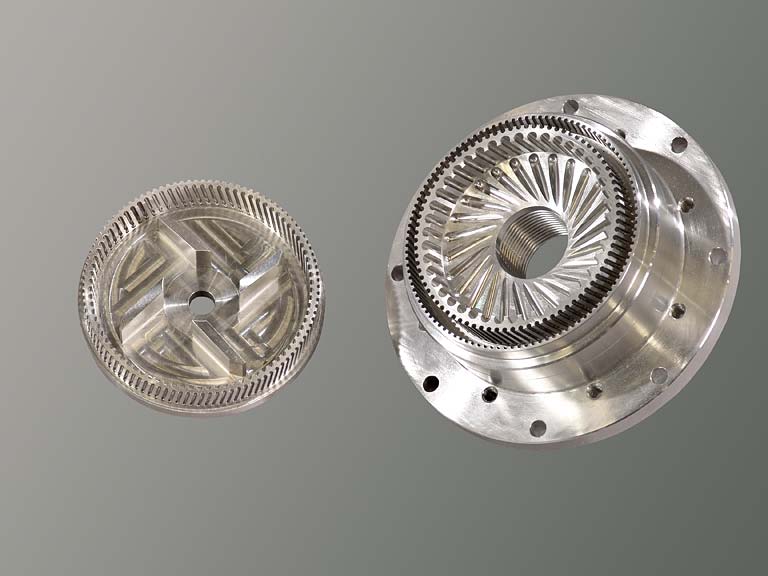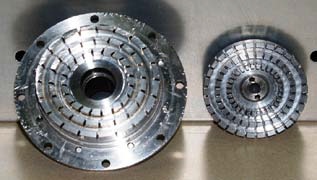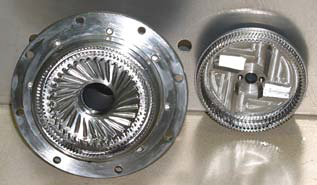Tech Report
Ultra-high shear mixers increase overall throughput and efficiency of homogenization processes

Maximizing process efficiency during pre-mixing
Many fine emulsions and dispersions require multiple passes through a high pressure homogenizer to achieve the final droplet or particle size distribution. Operating and maintenance costs for a homogenizer are comparatively high, so the addition of an upstream mixer that can prepare a finer premix and reduce the number of passes through the homogenizer significantly reduces processing costs and sharply improves equipment utilization.
Ultra-high shear mixers vs. conventional rotor/stators
Several types of mixing systems are utilized for combining raw materials into a pre-mix. There are gentle agitation devices such as low speed propellers, turbines or paddle agitators. Better quality pre-mixes are achieved through the use of high speed devices like open-disc saw-tooth blades and high shear rotor/stator mixers. Conventional high shear mixers feature a four-blade rotor running at tip speeds in the range of 3,000-4,000 feet/min within a close tolerance fixed stator. This type of device creates mechanical and hydraulic shear by continuously drawing product components into the rotor and expelling them radially through the openings in the stator. Ultra-high shear mixers, on the other hand, operate at much higher tip speeds around 11,000 - 18,000 fpm. The product being mixed is subjected to higher levels of shear compared to what is seen on conventional rotor/stator mixers.
Finer pre-mix, increased throughput
The high tip speeds and complex turbulent mixing patterns generated within the rotor/stator assembly of an ultra-high shear mixer enable it to produce fine emulsions and dispersions. The benefit of preparing a higher quality pre-mix lies in the reduction of passes through the high pressure homogenizer, an inherently low-throughput device. A greater volume of end product can therefore be produced per operating hour of the homogenizer. Being an inline device, the ultra-high shear mixer can mix raw materials and pump the mixture directly to the homogenizer. Flowrate is comparatively higher than a similarly powered homogenizer.
Cost-effective alternative to high pressure homogenizers
In certain applications, ultra-high shear mixers even effectively replace high pressure homogenizers. These include submicron emulsions and dispersions, as well as formulations that degrade upon exposure to excessive shear. Manufacturers reap the advantages of lower equipment cost, significantly shorter cycle time, faster changeover and easier maintenance.
Ultra-High Shear Mixer Rotor/Stator Designs

X-Series
The X-Series head consists of concentric rows of intermeshing teeth. Product enters at the center of the stator and moves outward through radial channels in the rotor/stator teeth. The combination of high tip speed and extremely close tolerances subjects the product to intense shear in every pass. The gap between adjacent surfaces of the rotor and stator is adjustable for fine-tuning shear levels and flow rates.

QuadSlot
The QuadSlot mixing head is a multi-stage rotor/stator with a fixed clearance. This generator produces higher pumping rates and requires higher horsepower compared to an X-Series rotor/stator set running at similar speeds.

MegaShear
The MegaShear operates at the same tip speed as the X-Series and QuadSlot heads, but is even more aggressive in terms of shear and throughput levels. It consists of parallel semi-cylindrical grooves in the rotor and stator towards which product is forced by high velocity pumping vanes. Different streams are induced within the grooves and collide at high frequency before exiting the mix chamber.
Sample Application: Silicone Emulsion

A manufacturer of specialty coatings has standardized their silicone emulsion production on Ross X-Series Ultra-High Shear Mixers. The bold move from their previously established homogenization process was made after testing at the Ross Test & Development Center. The mixing trial confirmed that the X-Series produces the desired average droplet size and narrow distribution at a much higher throughput than their high pressure homogenizers. Easier maintenance and lower capital cost are the other main reasons that this company`s silicone emulsions are today being made on X-Series units installed in their various facilities.